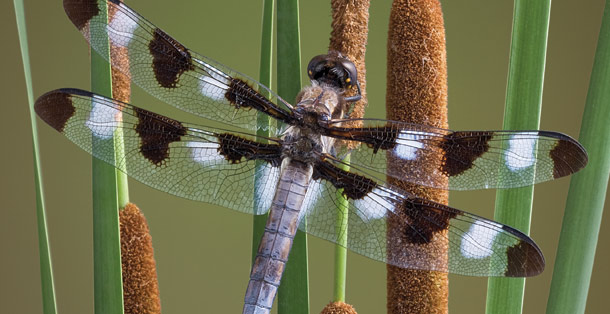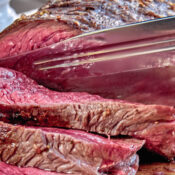Don’t know why they dug the pit next to the railroad tracks. Don’t know anybody who does. It was just there on the short end of an alkali flat, all sagebrush and salts. The pit is always filled with water deep blue and high smelling, just like the mud there.
The pit has its share of junk. Couple of eons from now, some archaeologist will dig into it and ponder the significance of bed springs rusting away in one end and the fender of an old Model T Ford in the middle.
Kids figured it a God-given gift. Parents might have disagreed, if anyone had told them about it. Polio was still going around the country then, crippling and killing. Polio lurked in standing water. They just didn’t know why.
Parents were kind of touchy about pools of water, so we didn’t talk about the pit much. Didn’t want our mother to worry about it. Mom had enough to worry about when it came to water. One of her brothers had drowned in a well, and she blamed herself for that, although she had no reason to. That colored her thoughts when it came to her own kids and water. Dad was a little touchy, too. He was a deputy sheriff, and he’d had the unpleasant duty of pulling people from the Yellowstone a day or two into their deaths. Fact is that we wouldn’t have gone swimming in that pit. If we were going to swim, we were more likely to go to the river where the water was clean and deep and fast. We didn’t want them worrying about that, though, so we never talked much about it.
But we all knew the pit wasn’t for swimming, more for hunting treasure.
We launched great expeditions on that pit, riding our imaginations and rafts cobbled together from flotsam and jetsam. The rafts were always an inch away from discombobulating but sturdy enough to carry us to new worlds.
What treasures we found. Dragonflies winked red as rubies, green as emeralds, and blue as sapphires from cattails along the shore. Anaconda snakes, babies they were and dressed in their best striped suits, fled the expeditions to hide in the cattails. Sometimes they dived and swam underwater, rippling all the colors of the rainbow.
Skippers and water boatmen plied those waters, and from a raft it was easy to see the constant war waged among these creatures, easy to feel the sting of a boatman’s bite until we learned to leave them alone. We peered down into those waters, watching mosquito larva attempt to squirm away from dragonfly larva. We rooted for the dragonflies.
Dragonflies taught us what iridescence means, and patience, too. They poised on cattails, awaiting the next mosquito and their lunch. Still they were, so still that cattails blossomed into strange, beautiful flowers. If a boy had as much patience as a dragonfly, and just a little bit more, he could move his hands behind the insect so slowly that it didn’t seem to move at all. And if the vagaries of wind and mosquitoes didn’t interfere, a boy could catch the insects by their wings and look at them eye to eye. Dragonflies teach little boys not to blink.
This was my 11th year, the last summer of my childhood. My younger brother and I worked that summer and the one before in the Beartooth Mountains with my father, learning how to operate a chainsaw and drive a truck and trim branches from lodgepole pine with a double-bitted ax. I “snaked” the pine out of the hills with Nancy, a bay horse that knew more about her job than I did, but she humored me.
Those were great times, up in the mountains with the scent of pine so sharp it made me dizzy. Dad ruled over that mountain school, teaching us what Archimedes meant when he said that if he had a lever long enough and a fulcrum strong enough he could move the world. We used levers to move Dad’s wickiup from the pickup to the ground, and later to lever it back on the truck. Dad always called it the wickiup, but it looked more like a sheep wagon without wheels. It was cozy, too cozy sometimes, but it was warm and dry. We were in that the day of the big shake-up in Yellowstone Park. Things were jiggling outside the wickiup; we figured it was just a bear.
Dad taught us, too, that 11-year-olds could load fence posts and corral poles on the backs of trucks as well as anyone — maybe better because the years hadn’t bent our backs yet.
We learned, too, to make do. We always ran short of food, falling back on whatever raspberries we could pick — and pancakes. No butter. No syrup. No sugar. Nothing but pancakes for breakfast, lunch, and dinner. Couldn’t see why the hell people liked pancakes.
Then there was the day that the chainsaw slipped and fell on Dad’s knee. We watched him take a curved needle and heavy black thread to his knee. We didn’t miss any work that day, except for the time it took Dad to sew up his knee. Dad taught us how to make do.
Still, in my 11th year I was child enough to spend days at the pit, watching all the dragonflies and the mosquitoes fight for life in that dark blue water.
I didn’t know it then, but I was in the last of my free summers. The next summer I had my first paying job. I was old enough then for a Social Security card, so I worked 60 hours a week in a grocery store for $27. I was cutting tall cotton that summer, but I couldn’t go to the pit anymore, or the mountains.
I didn’t know that day that it would be special. I just knew that it was hot, maybe as hot as the hell that Dad talked about sometimes. The sun was beating the color from the dragonflies and the day. Everything bleached out in the heat, cattails, snakes, frogs, and boys. We pushed the raft to the shore with all the resolve of Humphrey Bogart pulling the African Queen through the leech-infested swamp.
No words were spoken. None needed to be. We just set off for the river and relief, imagining that we were crossing the Sahara, seeking an oasis. That image pulled us along until the killdeer put on a show for us.
Killdeer are beautiful birds, decked out in whites and grays. They move soft on the land. Bars across their necks and chests give them a formal air, as though they await an invitation to this bird ball or that.
Killdeer talk to people, singing kee-dee, or kee. I always thought they were telling me who they were, kee-dee, which I translated into killdeer. I was no expert in their language, but I figured I could understand that much. I did talk to the birds sometimes, trying to mimic their calls. I still try sometimes, but my whistler has gone soft.
Killdeer nest out in the open, laying almost invisible pebble-colored eggs. Still, rampaging skunks or raccoons or coyotes or boys might find them, except that when predators approach a killdeer nest, the adults are suddenly stricken with a disabling disease. Their wings hang to the ground, broken and useless. They stagger, fair game for any hunter. They suffer so that predators, or passing humans, forget the nests and pursue the stricken birds.
Always the birds find, at the last second, just enough energy to evade their pursuer and move farther and farther and farther from their nests. When a safe distance is reached and their eggs are safe, the birds make a miraculous recovery and fly away.
What a remarkable thing that is to watch, and we were watching when we heard the call from my older cousin. He was of an age when blue-mud pits and killdeer lose their interest. Raging hormones were upon him.
Humans aren’t much different from other animals. Both go willy-nilly in the breeding season. It’s a terrible thing to watch. Pimples sprout; hands that might better be used to catch frogs roam over faces, seeking pustules that will end the inflicted’s fantasies forever if they pop up in front of Mary or Sue or Lilly.
The victims of this affliction issue pheromones of Old Spice and English Leather. Hormones set them to strutting, banging heads together. Puberty is a terrible thing to suffer.
My cousin was in a state of high dudgeon. He had to have five dollars. One of his friends was taking him to Billings. There were promises and possibilities. He had to have five dollars. Would I buy his Stevens Crack Shot 26 single-shot .22-caliber rifle? The rifle was old then, with a falling block action that went out of mode a half-century before. Would I buy that rifle for five dollars?
A rifle? Would I buy a .22-caliber rifle with the five dollars I had been saving since who knows when? Would I give him five dollars for a rifle with which I could hunt rabbits and cougars and maybe bears? Would I pay five dollars for adulthood?
No. Definitely not.
My father hadn’t raised any fools. He told me that a 10 percent discount comes with cash. Would I pay five dollars? No. But I might pay four dollars and fifty cents.
Incredulity crawled across my cousin’s forehead. Promises had been made. Possibilities were just 40 miles down the road in Billings, Montana. Five dollars was all he wanted for a Stevens Crack Shot 26 falling-block .22-caliber rifle. Just five dollars for promises and possibilities.
He blinked.
I remembered another rule.
I hadn’t spent those fall nights watching my father clean his rifle before hunting season for nothing. The smell of banana oil was as strong in my nose as any kid’s. Our livelihood was as dependent on venison as anyone’s.
Even a five-dollar rifle wasn’t a good buy even after taking 10 percent off for cash if it couldn’t shoot straight.
Did that Stevens Crack Shot .22-caliber falling-block rifle shoot straight? I would have to know that the rifle shot straight before I would spend $4.50 for it. Did he have any cartridges so that I might test the accuracy of that rifle, refinished stock and all?
He blinked, showing me how to pull down the lever that drew down the block and firing pin and cocked the rifle. He slipped a .22-caliber bullet into the chamber and pulled up the lever, leaving the rifle cocked.
One more thing my father had told me. Anyone selling a rifle should throw in some shells. Did my cousin have some shells that he would throw in with this $4.50 Stevens Crack Shot 26 rifle?
Yes, he did, he said, handing me a box of Winchester copper-plated .22 long rifle cartridges.
The final test. How accurate was this rifle? I looked around for a target. A killdeer was standing about 60 yards away. We weren’t close enough to the bird’s nest to bother her. Kee-dee, she sang. Kee-dee-kee.
I centered the tip of the front sight into the notch of the rear sight, just as my father had taught me. I centered the post of the front sight on the killdeer and squeezed the trigger. I expected the rifle to kick. I had been told that rifles kicked the shoulders of their shooters in protest. This rifle didn’t kick. This rifle cracked, and the killdeer fell over. I ran to the bird, the rifle forgotten in my hand. She lay, soft gray and white against the earth with dark bands across her chest and throat and eyes as though she were dressed to go to some bird ball.
There was a drop of blood in her bill, bright red as a ruby, bright red as dragonflies winking from cattails along the pit.
My childhood died that day. It haunts me still, the scent of pine and the iridescence of dragonflies in a blue-mud pond. I see those things in the eyes of my mind, but I hear only the killdeer calling a haunting sound. Kee-dee. Kee-dee-kee.
Post fiction advisor Gary Svee won the 1990 Western Writers of America SPUR Award for Sanctuary. His short story “Henry’s Christmas” appeared in the Nov/Dec 2009 issue. For a list of his books, visit bit.ly/GarySvee.
This article is featured in the March/April 2018 issue of The Saturday Evening Post. Subscribe to the magazine for more art, inspiring stories, fiction, humor, and features from our archives.
Become a Saturday Evening Post member and enjoy unlimited access. Subscribe now




Comments
While “Crack Shot” by Gary Svee wasn’t my most favorite SatEvePost fiction story I’ve read this year, that isn’t to say that I didn’t enjoy reading it. Vivid descriptions and the tragic theme of the loss of childhood innocence resonates with the reader because of its timeless relation. Nice piece.